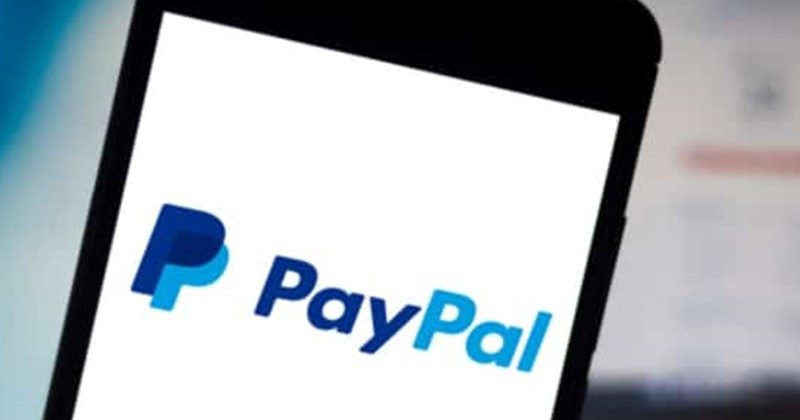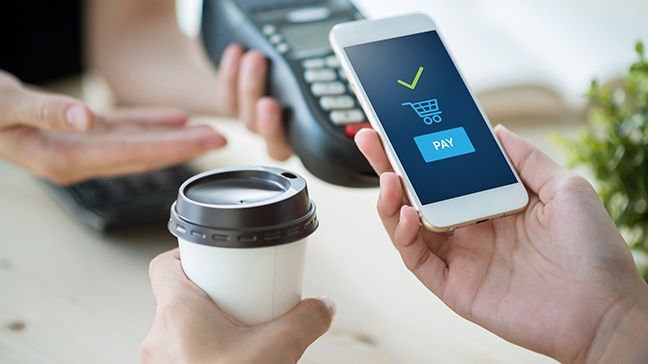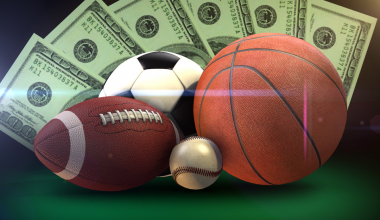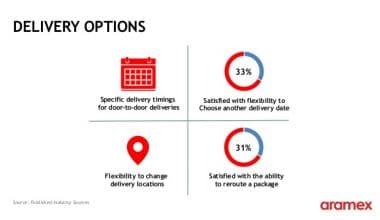PayPal is a merchant account and payment gateway in one. It is owned by eBay Inc. and was founded in 1998. Paypal is basically one of the first companies dedicated to digital payments. Its solutions can speed up and simplify set-ups, allowing any merchant to accept credit cards in their online store. With over 325 million active clients, PayPal is the most popular online payment service in the world. But like any curious business owner who is new to eCommerce would ask, “How does Paypal Work?” This post is designed to fix or confirm any doubts you may have about this payment system. We will basically answer fundamental questions like, “how does PayPal work when sending or receiving money?” “How does PayPal work with a debit or credit card?” and a couple of other details you need to know about this eCommerce tool.
How does PayPal Work: Overview
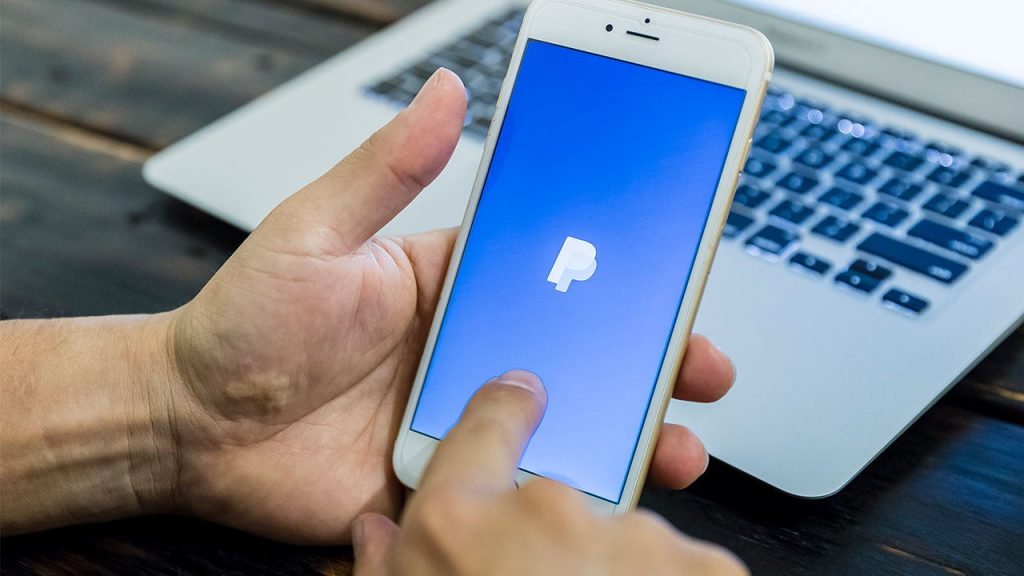
It’s an online financial service that lets you pay for things with a secure online account. Basically, how it works starts with you just putting in your bank account, credit card, or debit card information, and choosing which of your cards or accounts PayPal will use when sending or receiving money. You can also make one of them your default payment method, which will be utilized unless you change your mind.
For the most part, you can use PayPal to not just pay for items, but to also receive money. Any money you get is deposited into your PayPal account and can be used to make purchases, with the amount being replenished using your assigned cards or bank account.
You can also transfer the funds to other designated bank accounts or credit cards.
When you receive money into your PayPal account, you may be charged a fee. For instance, if you sell something on eBay.
Read Also: EBAY BIDDING: Rules, Bots, How it Works & How to Win (+ Quick Tools)
On a personal level, however, the vast majority of uses are entirely free. Transferring money to friends or relatives using PayPal accounts is free as long as no currency conversion is required.
There are also business PayPal accounts, which you will learn more about in the course of this post. In other words, a ton of businesses can now accept card payments that they couldn’t before thanks to PayPal.
And because PayPal used to be owned by eBay, it is frequently associated with the online auction house. However, in 2015, it was spun out as a distinct corporation.
How does PayPal Work: Background Story
PayPal was launched by Peter Thiel and Max Levchin in December 1998 under the name Confinity. The company’s idealistic notion of global money, free of state constraints, was based in Silicon Valley. PayPal swiftly grew to 1 million members after combining venture capital backing with eBay transaction relationships.
PayPal’s success, on the other hand, immediately drew the attention of hackers, con artists, and organized crime groups, who used the service for identity theft and money laundering. Although new security measures helped to halt the stream of fraud and customer complaints, government officials were quick to intervene. PayPal was fined and its business practices were examined by regulators and attorneys general in numerous states; including New York and California. Some states, such as Louisiana, have outright forbidden PayPal from functioning within their borders. PayPal has since been granted permission to operate in several areas.
But despite the initial upheaval, PayPal’s market share increased. PayPal initially provided new users a $10 welcome incentive as well as bonuses for referring friends. The service grew so swiftly that it immediately became the de-facto standard for online transactions. Purchasers wanted to use it because so many merchants did, and retailers were willing to accept it because so many buyers were.
Read Also: PAYPAL SELLER PROTECTION: Detailed Guide to the PayPal Seller Protection Policy
PayPal’s initial public offering (IPO) took place in February 2002, with shares opening at $15.41 per share and completing the day’s trading over the $20 mark. PayPal owes a lot of its early success to eBay users who advertised PayPal as a way to pay for their online auctions. Even in the online payment market, PayPal outperformed eBay’s in-house payment system Billpoint so well that eBay purchased PayPal for $1.5 billion in stock in October 2002. Billpoint was phased out of eBay’s services, and PayPal was included. Buyers could simply click on the PayPal logo when they win an auction to make an immediate payment.
Sellers with PayPal accounts could also place icons in their auctions so that buyers can simply click on the PayPal logo when they win an auction to make an immediate payment.
PayPal has been a consistent leader in online transaction services since 2002. Its services in the United States have been expanded to incorporate features such as debit cards for its accounts. As of 2019, PayPal had 277 million active users and was available in over 200 countries. PayPal has gotten a little closer to Thiel and Levchin’s original utopian objective with their global expansion.
Types of PayPal Accounts
There are three kinds of PayPal: personal, premium, and business. All account types can send and receive money, but while PayPal caters to individuals who want to make secure and flexible personal payments, the corporation also caters to businesses with a suite of other services such as online shopping carts, shipping assistance, and invoicing. Furthermore, PayPal provides business financing to help new businesses get off the ground.
Apart from these functions, the three accounts have certain similarities in terms of features and limits. You can send up to $10,000 in a single transaction if you have a verified account, and there are usually no transaction fees when sending and receiving money between PayPal accounts. However, if you need to transfer money, you’ll have to pay a fee. Unverified accounts, such as those without a linked bank account or credit card, have tighter withdrawal and sending restrictions.
There are several significant differences between the three PayPal account types. Personal accounts, for starters, allow you access to the most basic services, but that’s it. PayPal’s customer service for personal accounts is primarily handled by e-mail via a virtual customer service agent on the PayPal website.
Business and Premier accounts are identical, but business accounts must be established under the name of a company or group, whilst Premier accounts can be registered under the name of a company, group, or individual. A business account can also be shared among numerous users.
Read Also: Ecommerce Delivery: Best Strategies, Services, Solutions (+Free Tips)
Business and premium accounts include the following features in addition to PayPal’s main functions:
- Payments can be made with debit and credit cards.
- Providing the ability for senders to set up regular payments (subscriptions)
- Use of a PayPal ATM/debit card is unlimited.
These added capabilities come at a cost: transaction fees, which we’ll go over in more detail later.
NOTE: If you're opening a PayPal account for your business, compare the fees and services offered by PayPal to those offered by other credit card processing services to see which one is best for you. Consider that most of the coding you'll need to add to a website using PayPal is also automated for you. Other services may not make it as simple to install shopping carts or "pay now" buttons.
You’re ready to send and receive money once you’ve created your account. Next, we’ll look at how PayPal does work when sending money.
How does Paypal Work When Sending Money
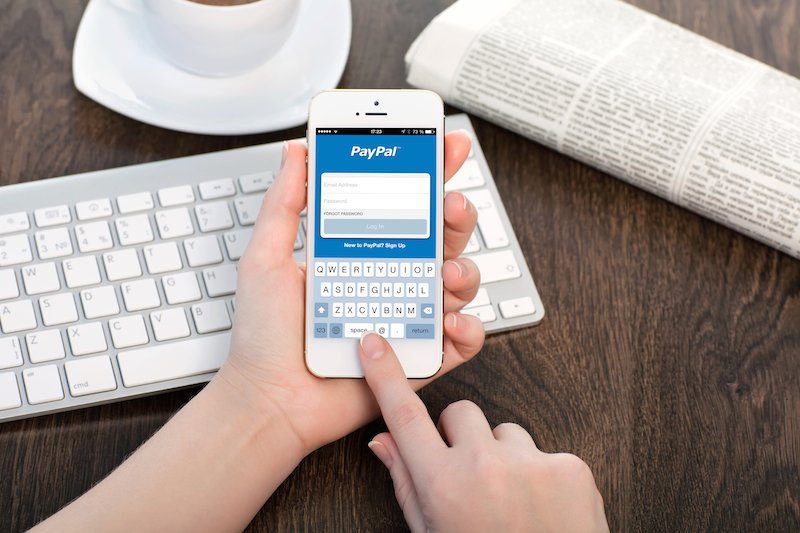
Despite the fact that PayPal grew to prominence as a result of eBay, one of the secrets to its success has been its ability to grow beyond that market. It can be used to transfer money to a friend, donate to a charity, and make online purchases. However, you’ll need one of two items to send money using your PayPal account:
- Funds in the PayPal account before any transaction.
- PayPal will remove the required amounts to cover the transaction from your instant transfer account, which is commonly a checking or savings account. In other words, you may also need a savings or checking account.
After this, it’s only a matter of knowing who you’re sending it to. You’d need the email address linked with a person’s PayPal account to send money to them. You can also contribute money occasionally to an organization or business through a PayPal link on its website.
PayPal is a completely free service for the sender. In other words, there are no costs when sending money directly from a checking or savings account. The only exception is if you get a cash advance from your credit card to pay for something. While PayPal may not levy a fee for this service, your credit card company most likely will.
Read Also: Paypal Transaction Fees: What are The Transaction and How to Avoid The Unnecessary Fees
After you send money, a record of the transaction should show on PayPal.com’s Activity page. You can use that history to look for a certain point in time if necessary. You may view all the specifics of a transaction by clicking the “details” link. This link includes the amount, date, receiver, and a unique transaction ID that PayPal uses to monitor your transaction. If you ever have a problem with a transaction, the customer care unit uses this transaction number to handle the problem from both the sender and the recipient’s perspectives.
You can still utilize funds in your PayPal account to make a transaction if a website only takes credit cards and not PayPal. To do so, you’ll need to apply for a PayPal debit card that works with the MasterCard network. The cash will be debited from your PayPal account if you use that card number with any merchant who takes MasterCard. This service is free, however, there is a $3,000 daily spending restriction.
Meanwhile, if you’re enrolled in PayPal Preferred Rewards, that debit card can also be used at ATMs to withdraw up to $400 in cash each day from your PayPal account, and it can earn 1% cashback on purchases.
In the next section, we’ll look at how does PayPal work when receiving money as a business.
How Does Paypal Work When Receiving Money
Venmo, which is owned by PayPal, is particularly popular among millennials since it provides a public feed where you can view all of your connections’ transactions.
If you wish to receive money using PayPal, you have several possibilities. For starters, if you provide someone with your PayPal account’s email address, they can send you money from their own PayPal account. If you’re selling products on eBay, you have the option of receiving payments using PayPal. If you’re selling from your own store or website, you can use PayPal to complete sales transactions in a variety of ways, including the following:
- Adding a PayPal “purchase now” button for each item you want to sell.
- Using the PayPal application programming interface to integrate a PayPal shopping cart with your website (API)
- Using PayPal’s Virtual Terminal to accept payments offline or off-site to process later.
When you’re logged in to PayPal, go to the “merchant services” tab to see all of your options as a seller. The price and availability of these services are determined by the website payment method you’ve chosen for your account. As a recipient, you’ll be assigned to the “standard” type by default, but for a $30 monthly subscription charge, you can upgrade to the “pro” type. Merchants who process a moderate to high volume of transactions per month should opt for the pro plan to avoid expenses like gateway and downgrading fees, which are often charged by other payment processing firms.
Read Also: PAYMENT GATEWAY: 13+ Best Options In UK (Best Practices)
Furthermore, you can use the wizard tools on the merchant services page to create new “purchase now” or “add to cart” buttons for your site. This generates HTML code that you may copy and paste onto your websites. When a customer clicks one of these buttons, your site redirects them to PayPal’s shopping cart, where they can complete the transaction. This relieves you of the responsibility of managing the appearance and functionality of your online shopping cart and checkout.
You’ll need to use the PayPal API for a more comprehensive integration, such as having a PayPal-powered shopping cart on your own site. If you aren’t familiar with computer programming or website building, you should subcontract this task to someone who is.
Once you’ve set up to receive money, it’s up to you to cover the transaction costs as the recipient. PayPal imposes a per-transaction fee of 30 cents + 2.9 percent of the transaction value to its business and premier account holders. For international transactions, PayPal additionally charges fees for converting between the currencies it accepts. All of these fees go toward paying for PayPal’s customer service and other services that are only available to business and premier customers.
Accepting offline and off-site payments is the final option indicated above. This indicates that you have obtained the buyer’s name and credit card information from a source other than PayPal. Using PayPal’s virtual terminal service, you can enter that information and complete the transaction. Virtual terminal, unlike other PayPal fee-based services, requires a $30 monthly subscription, or the equivalent of upgrading to website payments pro account. In addition to this fee, the per-transaction fees listed above still apply.
Read Also: Best eCommerce Platform: Top 15 eCommerce platform UK
Meanwhile, making a withdrawal from your PayPal account as a recipient allows you to take money out of your account. The following are your withdrawal options:
- Money should be transferred to a bank account linked to your PayPal account.
- Request that PayPal send you a paper check in the amount you specify.
- Use a PayPal debit card to make purchases.
So far, we’ve looked at how to use PayPal to send and receive money, as well as how PayPal accounts function. Next, we’ll look at the obstacles PayPal has faced, as well as the ongoing debate over its business methods.
Problems With PayPal
Despite the fact that PayPal has millions of users, not all of them have had a positive experience. Indeed, so many people have felt betrayed by PayPal that entire websites have sprung up to criticize the company’s business methods. PayPal Sucks is maybe the most well-known.
One of the most common complaints about PayPal is that it functions like a bank yet isn’t regulated as one. PayPal, according to critics, provides no protection comparable to that provided by traditional banks. Furthermore, it is not obligated to provide any of the security, customer support, or dispute resolution services that banks do. PayPal, on the other hand, retains significant sums of money for its customers, processes millions of financial transactions, and even provides credit and debit cards.
So, why isn’t it classified as a bank? The Federal Deposit Insurance Corporation (FDIC) concluded in 2002 that PayPal was not a bank since it did not fulfill the federal definition of a bank that accepted deposits, held physical money, or had a bank charter. To put it another way, PayPal isn’t a bank because it doesn’t refer to itself as one. As a result, most states have granted PayPal a “money service” license.
The unexpected and unexplainable freezing of PayPal accounts is one of the most prevalent problems that PayPal users face. You can’t add or withdraw money from your PayPal account if it’s locked, and you’ll have to go through a long, complicated process to authenticate your identity. Some PayPal users complain that the company simply took their money and never returned it. Other PayPal concerns include unfriendly customer service employees, a long and complicated user agreement, and sloppy hiring methods that may have resulted in account fraud.
PayPal is the most popular money transfer service for online transactions, notwithstanding these critiques.
How Does PayPal Work With a Debit and Credit Card
For starters, you’ll need to connect your debit card to your PayPal profile before you can use it. To do this, go to your “wallet” after logging into your account. Then go for the section where you can “connect a debit or credit card.” You can also add cards while making a payment by selecting “add a debit or credit card” from the drop-down menu when choosing how to pay.
Choose the type of card you’re using and enter the card details. The format for card numbers and expiration dates is the same when entering debit card information as it is when entering credit card information.
Card Types
If you use a real debit card from a bank or credit union, you’ll get the most features. They have a three- or four-digit security code on the back and a billing address that matches your home or mailing address.
On the other hand, some Visa, MasterCard, Discover, or American Express prepaid gift cards will work for one-time purchases. Other prepaid debit cards that are used to replace checking accounts frequently do not work.
Linking Restrictions
A debit card can only be linked to one PayPal account.
In other words, only one of you can use that card with your PayPal account if you and your partner use cards with the same card number, which is typical for credit cards but less common for debit cards.
Source of Funding
Check that you’re utilizing the funding method you want when you pay for goods or services. Take a close look at the “how to pay” or “final review” screens to do so. Several possibilities include; paying with a debit card, paying directly from a bank account, using a credit card, or spending from your PayPal balance.
Transferring Funds
Because your debit card deducts dollars from your checking account, you’ll need money in your account to complete a transaction. If you’re short on cash, keep in mind that each purchase will reduce your checking account balance immediately, raising the chances of bounced checks or the inability to make other payments from that account.
Transfers to Your Financial Institution
You can transfer your PayPal money for free to your bank account or for a fee to your debit card.
Your debit card deducts money from your checking account, making the funds in that account available for debit card purchases. Look for “Transfer Money” options on PayPal’s websites and applications to transfer money to your bank account or debit card. So basically, you can choose between transferring funds to a bank account or a debit card.
Refunds
If you use your debit card to make a purchase and then receive a refund (for example, because you returned an item), the reimbursement should be transferred to your debit card. If this does not occur, the refund will be credited to your PayPal account.
Fees Aren’t Required
If you prefer debit cards since they are less expensive, make sure you don’t overpay PayPal. PayPal does not levy fees to buyers who make purchases from businesses, even individual eBay sellers. If you’re a customer, it doesn’t matter how you pay; however, the merchant must pay fees, which may result in higher rates.
On the other hand, PayPal charges a fee if you use your debit or credit card to make personal payments (for example, paying pals for pizza night). However, using your bank account to fund the payment is free. Again, because the money for a debit card comes from your checking account, you might as well finance personal payments straight from your bank account.
Is Using a Card Risky?
For customers who utilize debit cards, PayPal has a few safety and security safeguards in place.
#1. Mistakes and Fraud
Your checking account is immediately linked to your debit card. Any charges to the card take money out of the bank account almost instantly. You may be protected in the event of fraud or account problems, but it may be difficult to pay bills until the money is returned to your account. However, because credit cards do not draw funds from your checking account, they are safer to use than debit cards (provided you don’t rack up debt).
#2. Purchases and Privacy
Using PayPal to pay with your debit card is safer than using your debit card directly. When you use PayPal, merchants (as well as hackers, thieves, and staff) see only your email address—your PayPal username—and some personal information. On the other hand, they would have access to your card number, security codes, and mailing address if you used a card directly. It’s difficult for fraudsters to steal your PayPal account without your password.
#3. Buyer Protection
Federal law provides strong buyer protection for credit cards.
Most debit cards provide similar security. PayPal, on the other hand, provides buyer protection and other features that may be superior to those provided by your debit card.
How Does PayPal Work With Credit Cards
PayPal allows you to utilize credit cards in addition to connecting your bank account and debit cards.
Most major credit cards, including Visa, MasterCard, Discover, American Express, and others, are accepted by PayPal.
Like we earlier mentioned, you can also link debit cards bearing the Visa or MasterCard logos to your PayPal account if you prefer.
This is how you do it.
How to use PayPal’s mobile app to add a credit card
- On your iPhone or Android phone, open the PayPal app.
- In the upper right corner of the screen, tap the Settings symbol (formed like a gear).
- Select “Banks and Cards” from the drop-down menu.
- In the top right corner of the screen, tap the plus sign.
- Select “Debit or credit card” from the drop-down menu.
- Tap “Debit or credit card” under the Manually link a card area, then follow the prompts to enter your credit card number.
Using a web browser, add a credit card to PayPal.
- Open a browser and go to the PayPal website, logging in if necessary.
- If you aren’t already on the Wallet tab, go to the top of the screen and press “Wallet.”
- Select “Link a debit or credit card” from the drop-down menu.
- Tap “Debit or credit card” in the “Link a card manually” box, then follow the instructions to enter your credit card number.
Why Should you use PayPal?
While there are many online payment methods available these days, such as Apple Pay and Google Pay, PayPal has a few advantages that others do not.
To begin with, because of how long it’s been in existence, it is well-known and widely regarded, especially among smaller retailers. Thousands of websites, including those that do not accept Apple Pay or other digital banking services, have a PayPal payment option.
Its buyer protection features will also ensure that you receive a refund if an item you purchase online does not arrive or does not match the seller’s description. This is especially useful when purchasing things on eBay, where shop guarantees are not always available.
Those who sell products on a personal or company level and get paid using PayPal are likewise safe. If you can show documentation that you shipped an item by mail but the buyer claims not to have gotten it, you can keep the entire cash.
Another advantage to use PayPal is that it adds another layer of security to your transactions. The online store does not have your details in its database because you do not have to input your card details or CCV number each time you purchase an item, only your PayPal login, and password or your cellphone number and PIN.
You can also use OneTouch payments, which keep you logged in if you enable the service. Hence, you don’t have to enter your information each time you buy something, regardless of where you buy it. This is due to the fact that it is device and browser-specific. If you enable OneTouch on your PC, for example, it will only function if you use that computer and the same browser.
What steps do I need to take to open a PayPal account?
It’s simple to open a PayPal account. You go to PayPal.com and choose the Sign-up option. You’ll be asked if you want to create a personal or business account, and then you’ll be on your way. But don’t forget to have your bank, credit, or debit card information at hand.
Every time you pay for something with the app, you’ll earn loyalty points.
What is PayPal Credit, and how does it work?
PayPal launched its own credit program last year, allowing users to buy products using PayPal and then pay for them later. It functions similarly to a credit card, but without the need for a physical card.
It now charges a (variable) purchase interest rate of 17.9% per year, but as an incentive, it offers 0% interest for four months on purchases of over 99 Euros/144 USD (according to rates at the time of this writing). So, if you pay it back within that time frame, you won’t have to pay anything more than the original purchase price.
Depending on the business, several stores offer unique incentives when paying for items with PayPal Credit, including lower interest rates.
Can I Use a Credit Card to Pay Someone on PayPal?
PayPal accepts payments from a variety of sources, including your PayPal balance, your bank account, PayPal Credit, debit or credit cards, and your rewards balance. Unauthorized transactions are not addressed on this page.
How Much Does PayPal Charge if You Use a Credit Card?
PayPal charges 2.9 percent plus a fixed cost of 30 cents to handle a credit card-based person-to-person money transfer. This cost can easily outweigh any credit card incentives you may receive.
Can You Get Scammed by Using PayPal?
Spam, phishing, and other forms of fraud on the platform are the most typical ways PayPal users are defrauded of their funds. You may know how to use PayPal properly, but scammers are constantly devising new ways to obtain access to customers’ accounts and digitally empty their pockets.
Related Articles
- Paypal Transaction Fees: What are The Transaction and How to Avoid The Unnecessary Fees
- The Bad Side Of PayPal You Probably Are Oblivious To
- E-commerce Business: Ideas, Models, & 2023 How to Start Guide
- Advantages of E-Commerce: How to Leverage them!!!
- How Does ELECTRONIC RETAILING Works: E-tailing vs E-Commerce
- HOW TO TRANSFER PAYPAL TO BANK: What You Should Know
